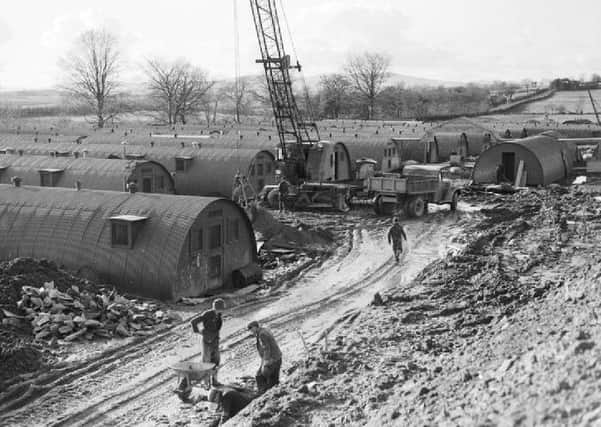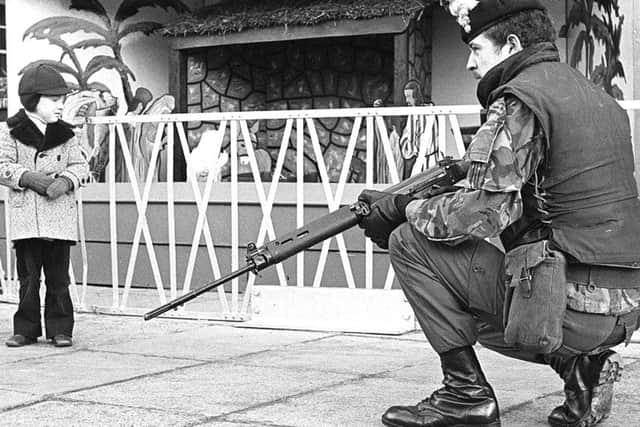Academic finds evidence rogue US servicemen tried to assist IRA


Dr Edward Burke, assistant professor of international relations at the University of Nottingham, uncovered the sailors’ claims whilst compiling material for a new book.
The claims form just one part of a large study, which focuses on what life had been like for British military personnel in Northern Ireland during the 1970s.
Advertisement
Hide AdAdvertisement
Hide AdDr Burke spoke to dozens of soldiers, and also discovered stories about the trauma felt by young British recruits over the abuse they got on the streets from women, and the difficulty they had in bringing themselves to kill people.


Originally from Cork, Dr Burke formerly worked in Afghanistan from 2010 to 2011 as deputy head of the International Police Coordination Board in Kabul.
This meant working together with Nato to try and develop the Afghan forces – an experience which left him with a “great respect” for the British Army.
It also made him interested in the “culture of a small unit”, and in examining how one such unit behaves compared to another – something which is the focus of his book: ‘An Army of Tribes: British Army Cohesion, Deviancy and Murder in Northern Ireland’.
Advertisement
Hide AdAdvertisement
Hide AdFor the book, he spoke to 36 different former personnel – almost all drawn from three battalions of the British Army: 1st Battalion Scots Guards, 2nd Battalion Scots Guards, and 1st Battalion Argyll and Sutherland Highlanders.


He also focused on the years of the early 1970s, simply because they were the most violent of the Troubles.
“I was interested in how they made sense of casualties, how they dealt with coming under fire, how they dealt with having to take life in the UK,” he said.
For example, he said: “In terms of using snipers for example – did they find all their training came readily to them?
“Were they able to, if necessary, take life easily?


“I found the answer was no.
Advertisement
Hide AdAdvertisement
Hide Ad“They’d a major problem with snipers not being able to shoot.
“As one officer put it, you’re trying to train soldiers to go between a W H Smith and an M&S, and it looks just like Britain, and suddenly you have to take life.
“I think sometimes in the republican narrative it’s kind of built up that there was a huge distinction between British soldiers and the natives, the Irish people they were sent to police.


“And actually, to some extent, these guys did feel there was a close affinity, that they were in the UK, that these people were their people.
Advertisement
Hide AdAdvertisement
Hide Ad“They were actually quite shocked when they found that people who looked like them and who they felt an affinity with were [giving them] such a hostile response.”
One of the intriguing details to emerge in the book concerns the US Naval Communications Station which existed in Londonderry from the 1940s to 1977, and what he dubbed a kind of “micro-conflict” involving its personnel.
During the course of his research, he came across a Scots Guards logbook which contained intelligence stating that a US Navy sailor was acting “as a driver for the IRA”, and that other sailors were also engaged in “illegal activities”.
“Basically up to a third of US soldiers married local girls,” said the Dr Burke.
Advertisement
Hide AdAdvertisement
Hide Ad“Most married Catholics who were sympathetic to nationalists or republicans; some married girls who had connections with loyalism, and that caused some tensions on the base.”
He went on to interview ex-American servicemen himself – including one sailor who claimed he met Martin McGuinness.
The American was married to a Bogside girl, and had been beaten up by British soldiers – something he “didn’t appreciate”.
After Bloody Sunday, “he and another sailor decided they would ultimately seek to help the IRA”.
Advertisement
Hide AdAdvertisement
Hide AdHe said: “Through republican intermediaries, a meeting was arranged.
“They went to a house in the Bogside and there to meet them, he claimed, was Martin McGuinness, among other senior Derry republicans.
“They sat down, they had a meeting.
“Martin McGuinness thanked them for their support, but he said in terms of their active participation in the struggle, it was better for them to keep out of it. And that was it.
“Like a lot of Americans are he was sympathetic to Irish republicanism.
Advertisement
Hide AdAdvertisement
Hide Ad“He decided he wanted to hit back against the perceived injustice to him and his wife’s family.”
He said that if this had been just one sailor’s account, he might have dismissed it as a “tall tale”.
But, taken in conjunction with British intelligence reports and the testimony of another sailor he had interviewed (who said sailors backing republicans “was a problem and this happened”) he concluded: “I’m not saying this was US Navy policy or this was a huge problem, but it certainly seems to me at least at an individual level a strong indication of some active support for the IRA by US Navy personnel.”
Summing his book up, he said: “I don’t pretend it’s a full account of the British Army’s time in Northern Ireland – far from it. It’s only part of that history.
Advertisement
Hide AdAdvertisement
Hide Ad“It offers some insights based on a snapshot of ordinary soldiers, sometimes very young men, young officers, and how they reacted to very difficult events.”
• An Army of Tribes: British Army Cohesion, Deviancy and Murder in Northern Ireland is published by Liverpool University Press. Paperback is £19.95.